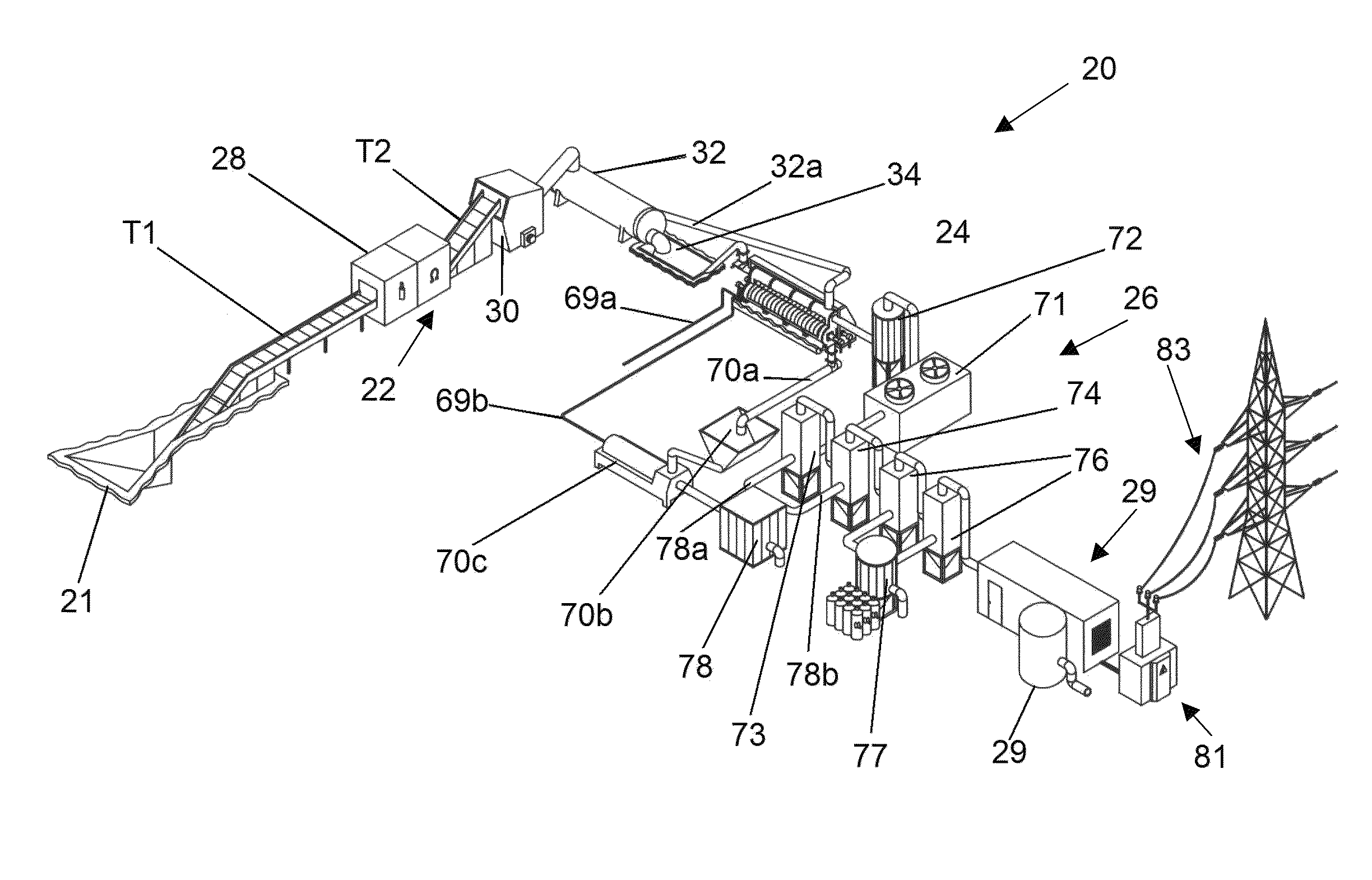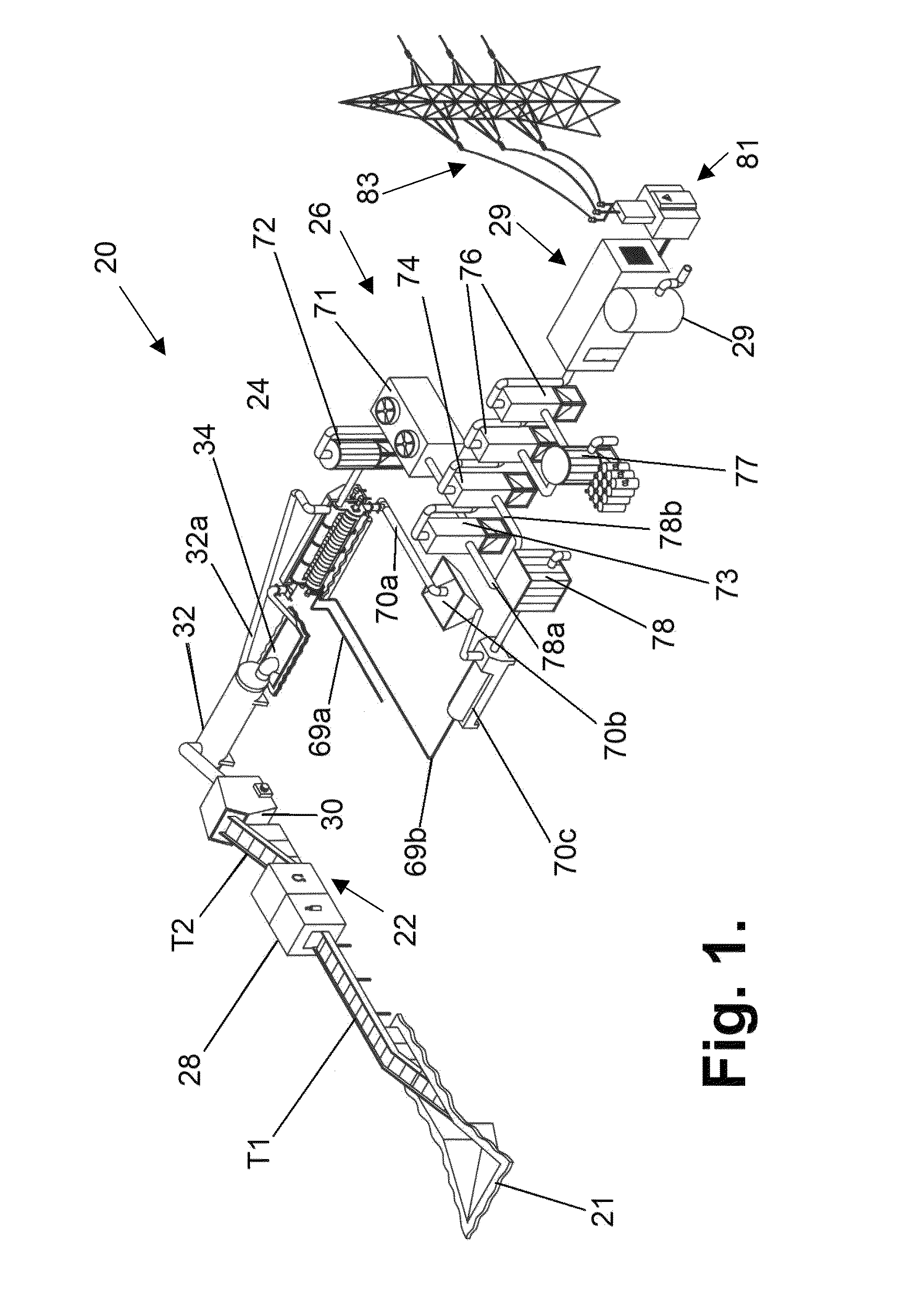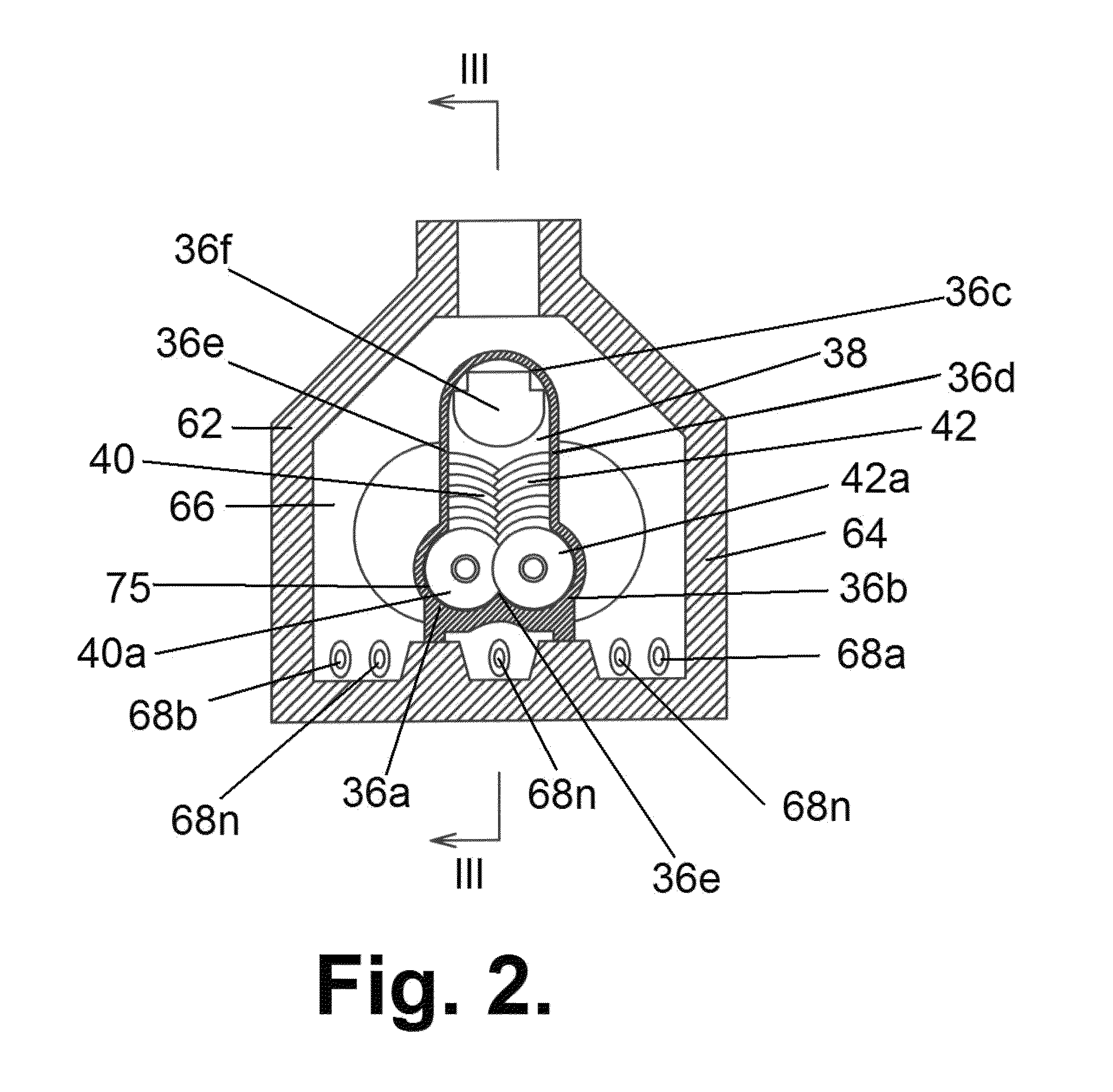Method and system for wasteless processing and complete utilization of municipal and domestic wastes
a technology of municipal and domestic waste and wasteless processing, applied in the field of waste treatment, can solve the problems of unburned chemicals, unburned chemicals, and new chemicals, and achieve the effects of reducing the amount of was
- Summary
- Abstract
- Description
- Claims
- Application Information
AI Technical Summary
Benefits of technology
Problems solved by technology
Method used
Image
Examples
Embodiment Construction
[0054]As has been mentioned above, the invention relates to a method and system for processing and utilizing solid municipal and domestic wastes by pyrolytic treatment.
[0055]A block-diagram of the system of the invention for processing and utilizing solid municipal and domestic wastes by pyrolytic treatment is shown in FIG. 1.
[0056]The system, which as a whole is designated by reference numeral 20, comprises the following main modules connected in series: a waste pre-treatment and feed module 22, a pyrolysis reactor 24, a syngas cleaning module 26, and an energy generation unit 29.
[0057]The waste pre-treatment and feed module 22, in turn, consists of a waste reception site 21, a linear conveyor T1, a waste-sorting unit or a sorter 28 that received the untreated wastes from the linear conveyor T1 and is capable of sorting untreated wastes and simultaneously removing those waste components that have low energy potential and do not contain hydrocarbons. In this unit, the sorted wastes ...
PUM
| Property | Measurement | Unit |
|---|---|---|
| temperature | aaaaa | aaaaa |
| temperature | aaaaa | aaaaa |
| temperature | aaaaa | aaaaa |
Abstract
Description
Claims
Application Information
 Login to View More
Login to View More - R&D
- Intellectual Property
- Life Sciences
- Materials
- Tech Scout
- Unparalleled Data Quality
- Higher Quality Content
- 60% Fewer Hallucinations
Browse by: Latest US Patents, China's latest patents, Technical Efficacy Thesaurus, Application Domain, Technology Topic, Popular Technical Reports.
© 2025 PatSnap. All rights reserved.Legal|Privacy policy|Modern Slavery Act Transparency Statement|Sitemap|About US| Contact US: help@patsnap.com



